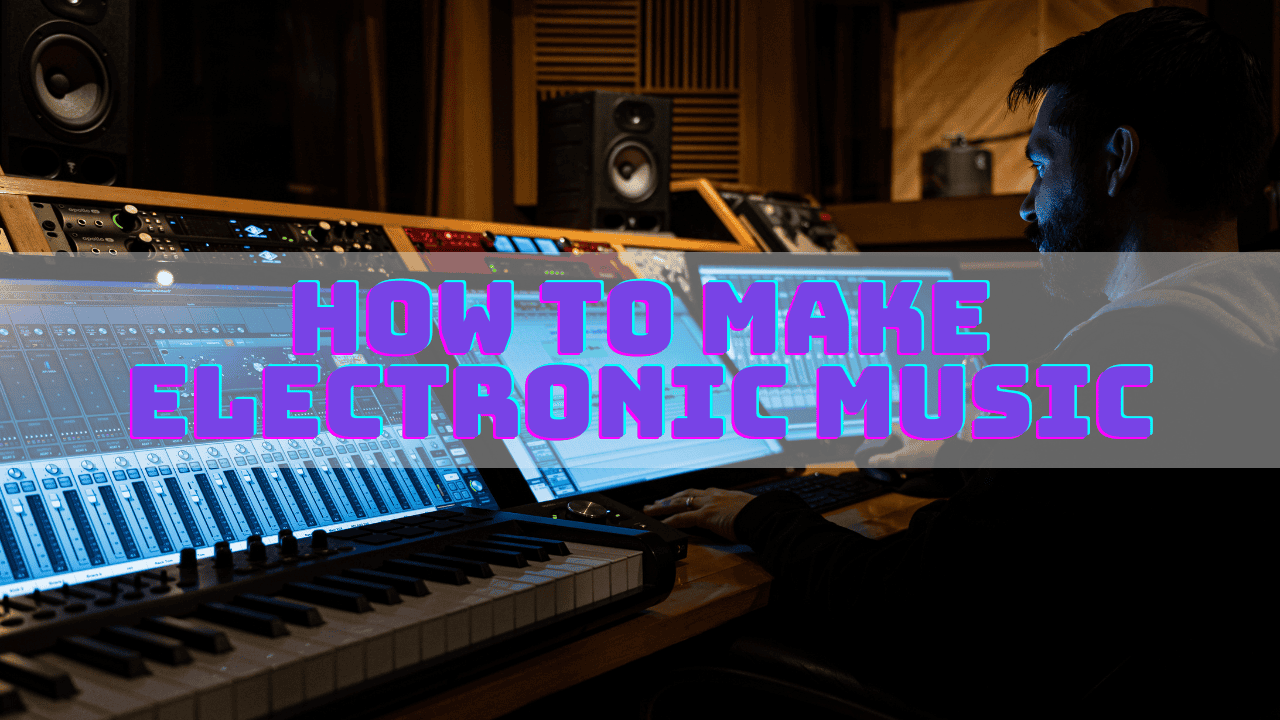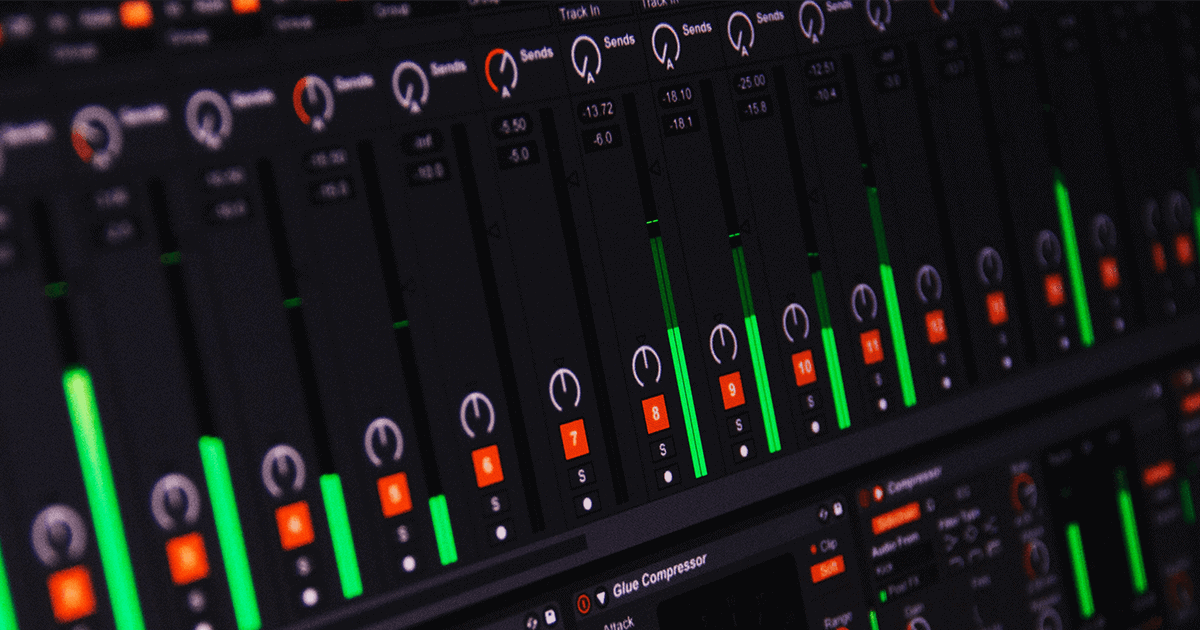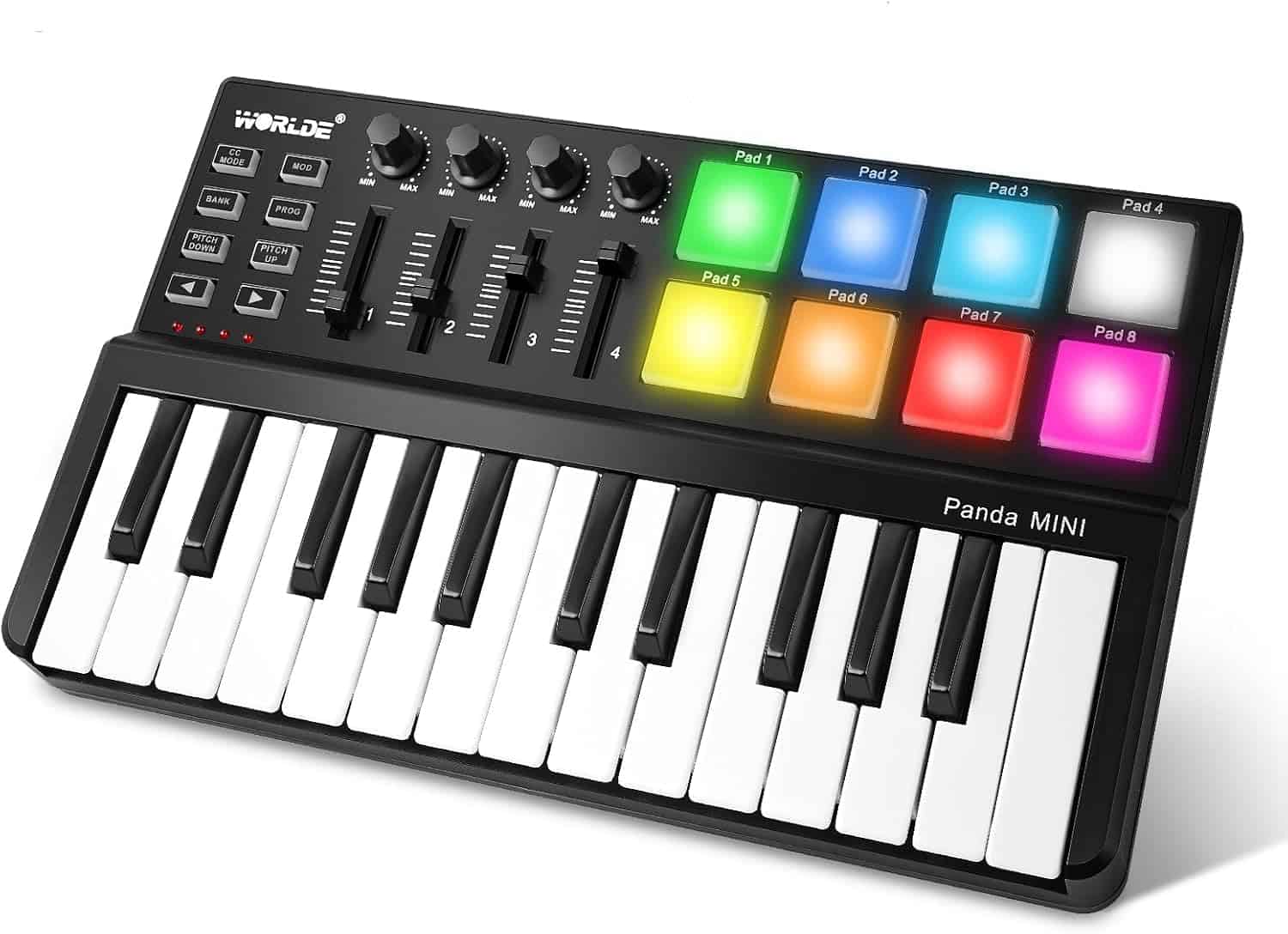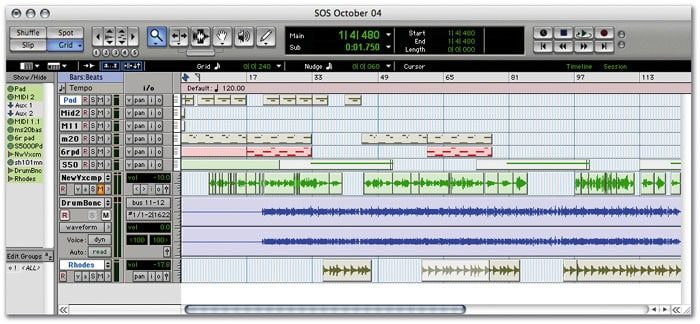Do you want to start making electronic music but don’t know where to begin? You’re in the right place! Learning to create electronic music can feel overwhelming at first, but with the right tools and guidance, anyone can become a music producer. Whether you dream of making beats, creating melodies, or experimenting with sounds, this guide will help you take the first steps.
Ready to start your music journey? Let’s dive in and discover how you can begin making electronic music today!
Table of Contents
ToggleEssentials for Making Electronic Music
To create electronic music, you need the right gear. Here’s a quick guide to the basics and some extra tips to get started.
Laptop or Desktop Computer
Your computer is the heart of your music production setup. If you’re thinking of upgrading or getting a new one, here’s what to look for:
- RAM: At least 16 GB is ideal for smooth multitasking. If you plan to work with larger projects or orchestral sounds, aim for 32 GB.
- Storage: Choose an SSD with at least 512 GB for your DAW (Digital Audio Workstation), plugins, and sample libraries. An external SSD is also a good idea for backups and extra space.
- CPU:
For Apple fans, M1 Pro, M1 Max, M2 Pro, or M2 Max chips are perfect for music production, offering both power and efficiency.
For non-Apple options, go for Intel Core i7/i9 or AMD Ryzen 7/9 processors, focusing on strong single-core performance.
These specs will ensure your computer can handle music production smoothly, no matter the project size!
Your Audio Interface: What You Need to Know
An audio interface is a key tool that converts analog sound into digital sound and back again.
This is crucial for recording into your computer, using external equipment, and listening to your work. Here’s what to look for when choosing an audio interface:
- Inputs & Outputs: Start with at least 2 inputs (for microphones and instruments) and 2 outputs (for studio monitors). Don’t forget a dedicated headphone output. Good beginner options are the Focusrite Scarlett 2i2 or MOTU M2.
- Connectivity: Look for models with USB-C for fast and reliable connections. Check if your computer supports USB-C or if you’ll need an adapter.
- Phantom Power: Make sure it has +48V phantom power to use condenser microphones.
With the right interface, you’ll have everything you need for smooth recordings and quality sound.
Picking the Right Studio Monitors
Studio monitors are special speakers made for creating music. Here’s how to choose the right ones:
- Size: If you have a small or medium-sized room, pick monitors with 5–7-inch drivers. They’re a good size and sound clear. Try models like the KRK Rokit 5 or Yamaha HS5.
- Sound Accuracy: Look for monitors with a flat sound that doesn’t add or change anything. Check reviews to make sure they’re good for making music.
- Room Size: Choose monitors that match your space. Smaller ones work better in small rooms or rooms without soundproofing.
You’ll also need good headphones to hear your music clearly or to keep the noise down. Like monitors, your headphones should have natural, clear sound.
Good options are the Audio-Technica ATH-M40x or Sony MDR-7506.
DAW (digital audio workstation)
Your DAW (Digital Audio Workstation) is the main software you’ll use to create electronic music. It’s where you’ll record, arrange, edit, and mix your tracks.
There are many DAWs to choose from, with different prices and features, but some are better suited for electronic music than others.
- Ableton Live: A popular choice for electronic music producers. It’s available at different price points, and some products, like LANDR Studio, include Ableton Live Lite as part of a bundle.
- Reaper: Another great option, especially if you’re on a budget. It’s affordable, and its 60-day free trial doesn’t lock you out after it expires, so you can test it for as long as you need.
- Bitwig Studio: Known for its features tailored to electronic music, including a built-in modular synthesis environment that’s powerful and fun to use.
If you want to explore more DAWs and find the one that’s right for you, check out our detailed guide on the best options for music production!
Plugins
Plugins are small programs that work inside your DAW and are made for specific tasks.
There are three main types of plugins:
- Synthesizer Plugins – For creating sounds.
- Sampling Plugins – For using and editing recorded sounds.
- Effects Plugins – For adding effects like reverb or distortion.
Most DAWs come with built-in plugins, so you can start making electronic music right away without needing extra ones.
However, many producers use third-party plugins because they often give better or more powerful results than the ones included with your DAW.
MIDI keyboard/controller
The right MIDI equipment makes it easier to create music in your DAW and use your plugins.
- A MIDI keyboard lets you play virtual instruments in your DAW like you would on a piano.
- A MIDI controller helps you adjust settings in your software, making it easier and smoother to perform and work on your music.
We recommend checking out Arturia’s KeyLab, KeyStep, and BeatStep series. They’re great tools for making your music process easier and more enjoyable!
Simple Steps to Start Making Electronic Music
Once you’ve got all the tools you need, it can feel a bit confusing to get started. Here’s what we suggest:
Learn the basics of your DAW
You’ll spend a lot of time with your DAW, so it’s a good idea to learn how it works as soon as you can.
If you’re new to music production, reading the manual can feel hard and confusing. Instead, try starting with an easy video course or a quick tutorial from the DAW’s maker.
Here are the basics you should learn first:
- Interface Basics: Get to know the layout, like the timeline, mixer, and file browser.
- Tracks: Learn how to add and edit audio and MIDI tracks.
- Built-in Tools: Practice using the instruments and effects that come with your DAW.
- MIDI Editing: Use the piano roll to make melodies, chords, and drum beats.
- Arrangement: Arrange and edit clips on the timeline, and learn how to make changes automatically.
- Exporting: Learn how to save your music as an MP3 or WAV file with the right settings.
Starting with these steps will make creating music much easier and more fun!
Learn the basics of synthesis
Synthesizers are one of the most important tools in electronic music.
Learning the basics of how they work will be incredibly useful as you grow your skills as a music producer.
Even if you plan to use samples more than synthesizers, understanding synthesizers is still valuable since their design has greatly influenced how sampling works.
We highly recommend exploring articles or videos like this to get started!
Learn how to use samples
Samples are just as important as synthesizers in electronic music.
In fact, many electronic musicians use samples more often than synths.
Learning how to use samples is a skill you’ll need a lot as a producer. Here are some simple things to practice:
- Editing: Learn how to trim, cut, and loop samples to fit your music.
- Time-Stretching: Adjust the speed and pitch of a sample to match your track. Ableton Live is great for this.
- Layering: Combine different samples to make fuller sounds or create new textures.
- Filtering & Effects: Use filters and effects on samples to shape the sound, just like you would on a synth.
- Sourcing & Choosing: Pick good-quality samples. The better they are, the easier it is to make great music.
By practicing these basics, you’ll have a lot more fun and creativity when working with samples!
Experiment with effects
Effects are used in almost all music today, but in electronic music, experimenting with effects is what makes the genre so unique. Here are some key effects to explore:
- Delay & Reverb: Create a sense of space in your music. Try unusual or extreme settings for creative, new sounds.
- Chorus, Flanger, Phaser: Change the character of your sounds and make them more interesting by using these common modulation effects.
- Distortion & Saturation: Add a gritty or heavy feel to your sounds. Use lightly for warmth or heavily for an intense, edgy vibe.
- Granular Effects: Break sounds into tiny pieces that shift and change to create unique textures and rich, atmospheric effects.
Understand MIDI & sequencing
MIDI is the core of electronic music, controlling everything from drum beats to basslines, melodies, and chords.
The piano roll in your DAW is a simple way to start learning how to create and arrange virtual instruments.
To improve even more, take time to learn the full MIDI features of your DAW. These skills will always help you as a music producer.
Here are some useful MIDI tools to try:
- MIDI Effects: DAWs like Ableton Live and Logic let you edit MIDI in real-time. These tools can help you create more dynamic and creative sounds.
- MIDI Generators: Plugins like LANDR Composer can create chord progressions, melodies, and drum patterns for you, making it easier to get started.
- Arpeggiators: These tools turn chords into flowing, arpeggiated melodies. Plugins like EON-Arp make this process easy and fun.
Common Mistakes When Making Electronic Music
Creating electronic music is exciting, but beginners (and even experienced producers) often make some common mistakes. Here are a few to watch out for and tips to avoid them:
1. Skipping Sound Design Basics
- Mistake: Using presets without understanding how they work.
- Tip: Learn the basics of synthesis and sound design to craft unique sounds.
2. Overloading Tracks with Effects
- Mistake: Adding too many effects, making the track muddy and cluttered.
- Tip: Use effects sparingly and focus on enhancing the sound, not overpowering it.
3. Ignoring the Importance of Arrangement
- Mistake: Creating a loop but not developing it into a full song.
- Tip: Plan your track’s structure with clear sections like intro, build-up, drop, and outro.
4. Mixing at High Volumes
- Mistake: Producing and mixing at loud volumes, leading to ear fatigue and unbalanced mixes.
- Tip: Mix at moderate levels to keep your ears fresh and the mix accurate.
5. Overcrowding the Frequency Spectrum
- Mistake: Adding too many elements that clash in the same frequency range.
- Tip: Use EQ to carve space for each sound and avoid overcrowding.
6. Not Using Reference Tracks
- Mistake: Producing in isolation without comparing your track to professionally mixed music.
- Tip: Use reference tracks to guide your mix, balance, and arrangement.
7. Rushing the Process
- Mistake: Trying to finish a track too quickly without focusing on details.
- Tip: Take your time to refine and polish every part of your music.
8. Forgetting to Back Up Your Work
- Mistake: Losing projects due to computer crashes or mistakes.
- Tip: Save your work often and use backups like external drives or cloud storage.
Avoiding these mistakes will help you create better music and enjoy the production process even more!
Conclusion
Making electronic music is an exciting journey, and with the right tools and knowledge, anyone can get started. Remember to take it step by step—learn your DAW, experiment with sounds, and practice using samples, synths, and effects. The more you explore, the more confident you’ll become as a producer.
Ready to start creating your tracks? Dive in today and bring your musical ideas to life. The world of electronic music is waiting for you—let’s make some noise!




